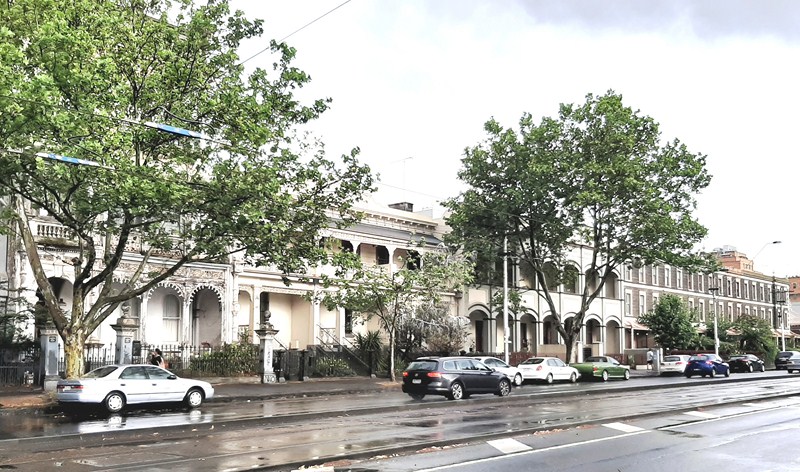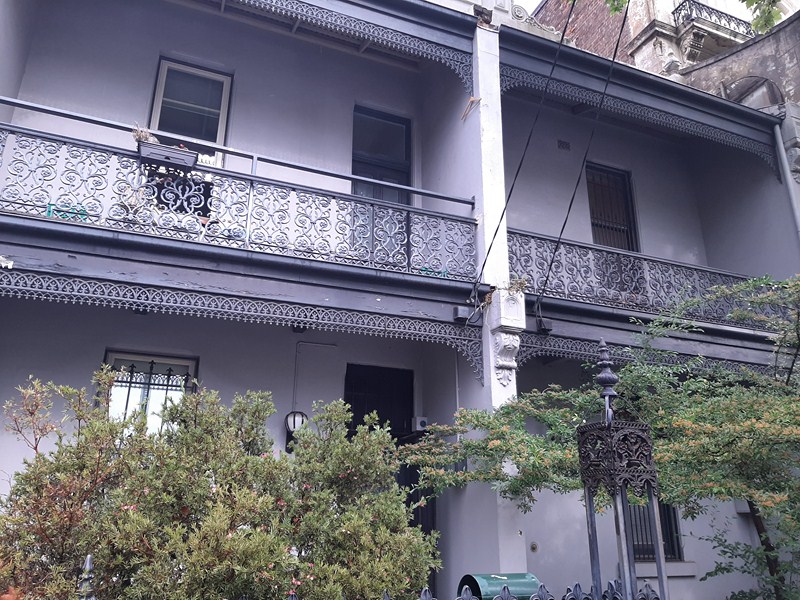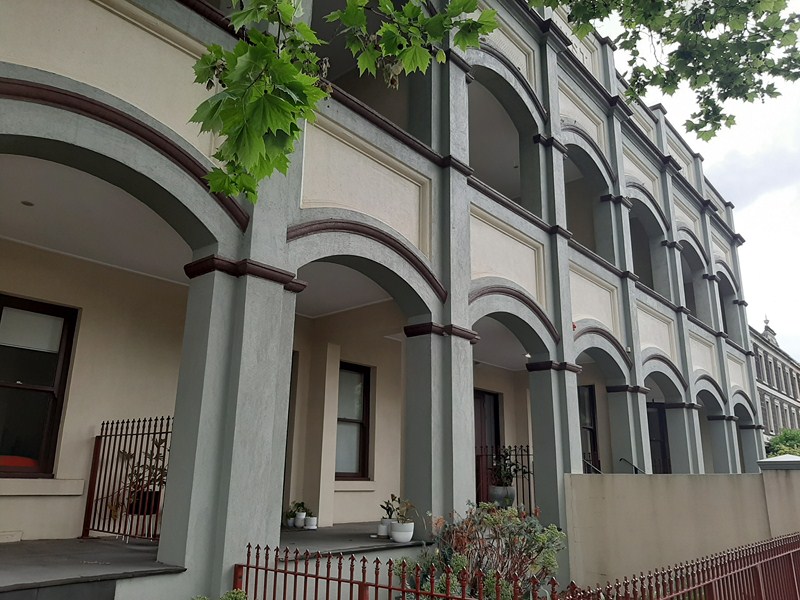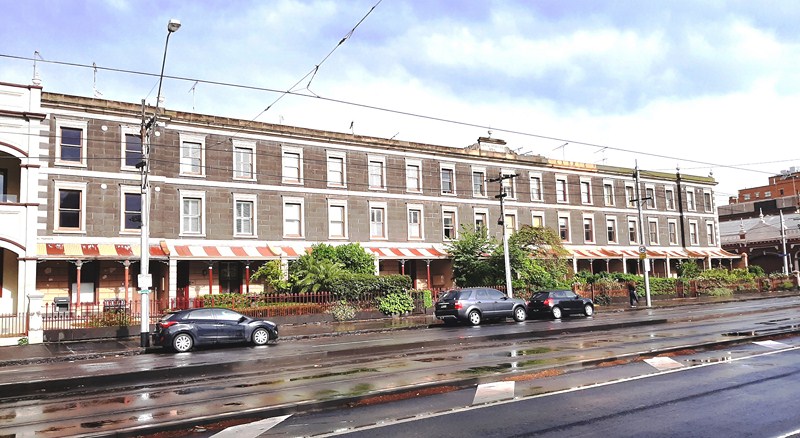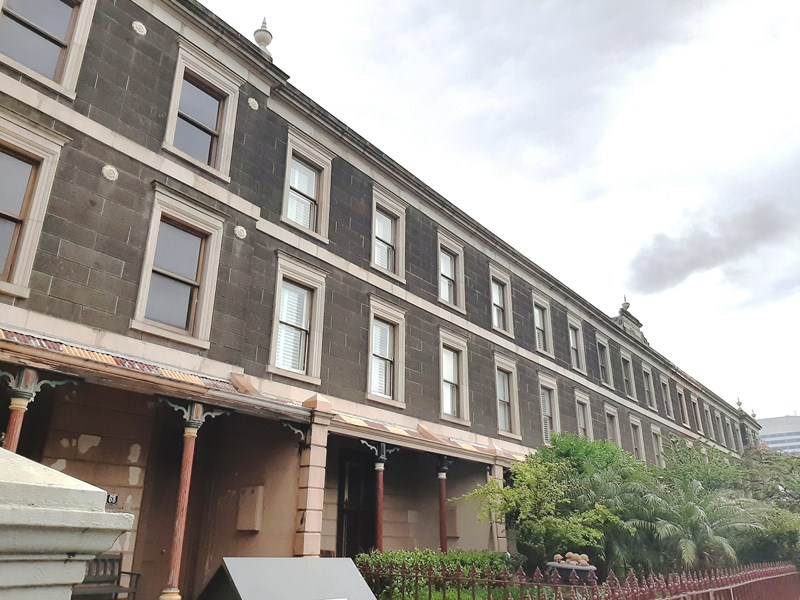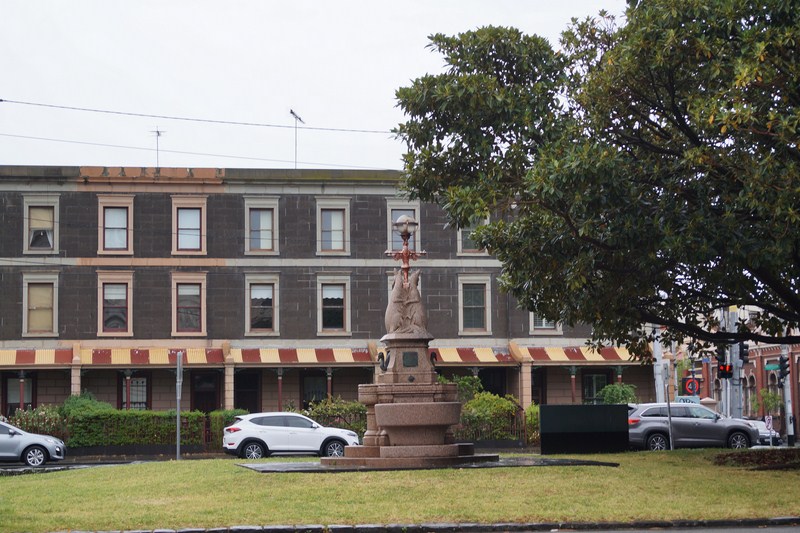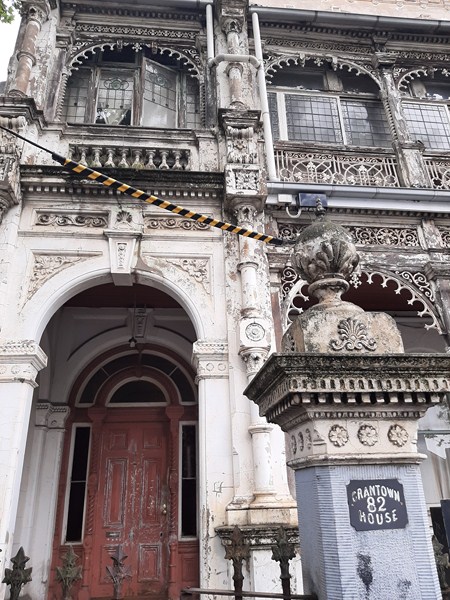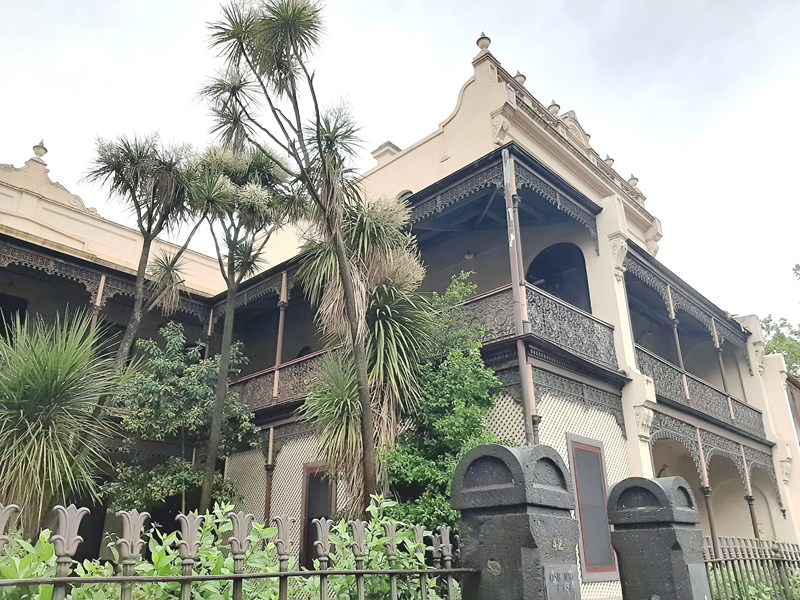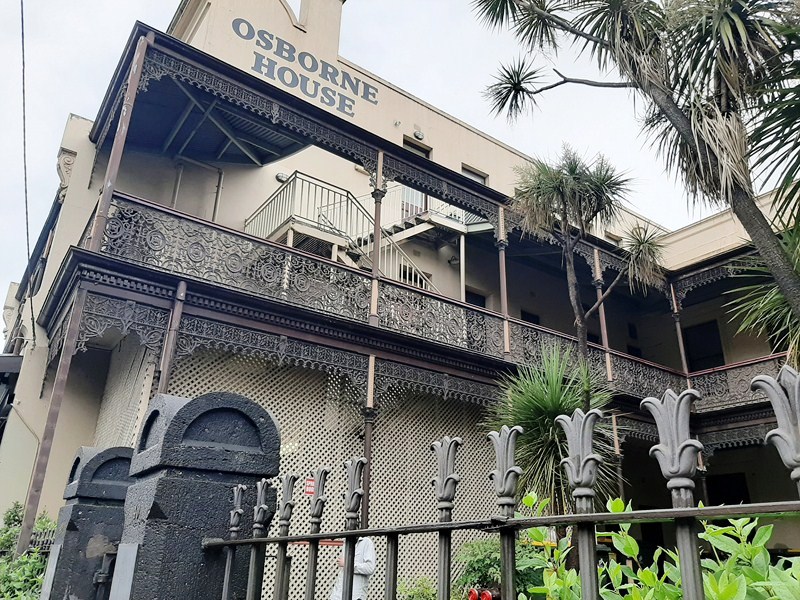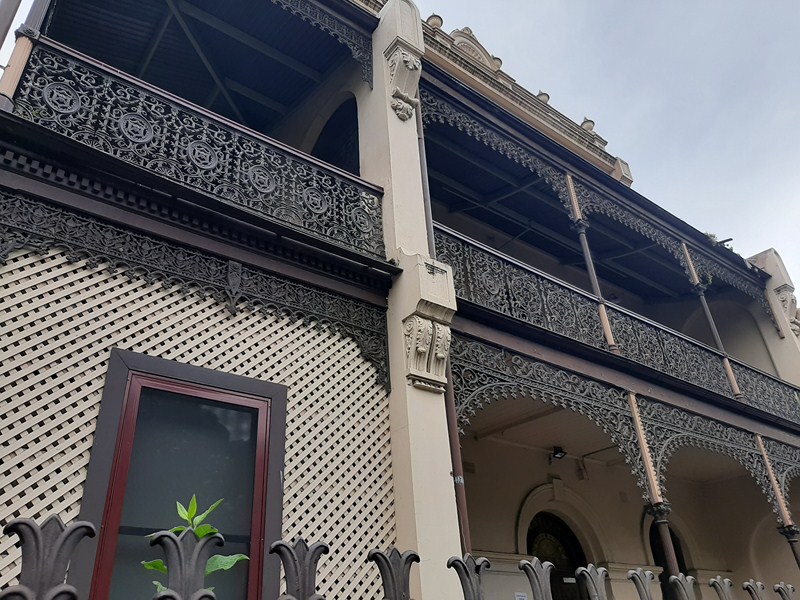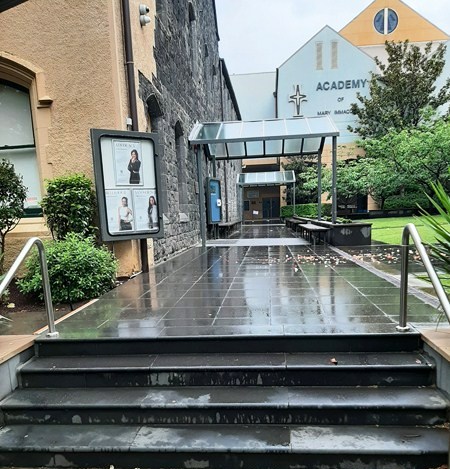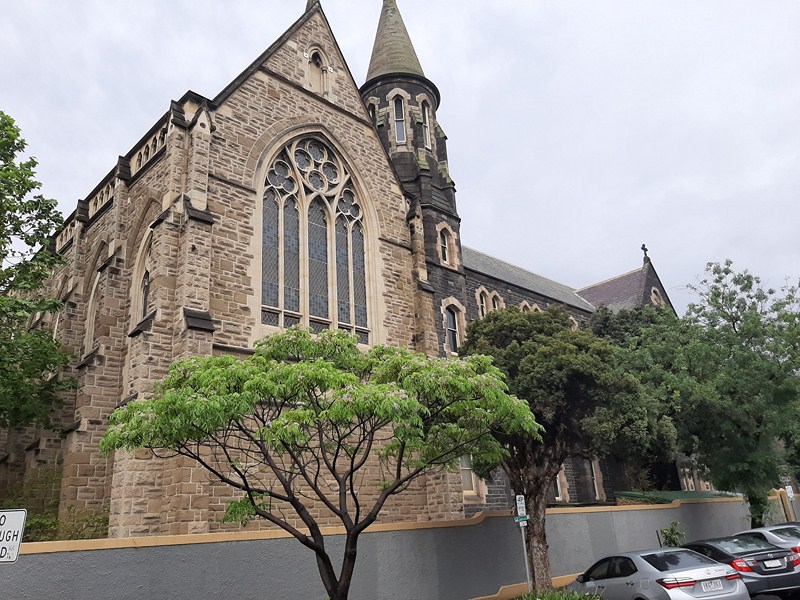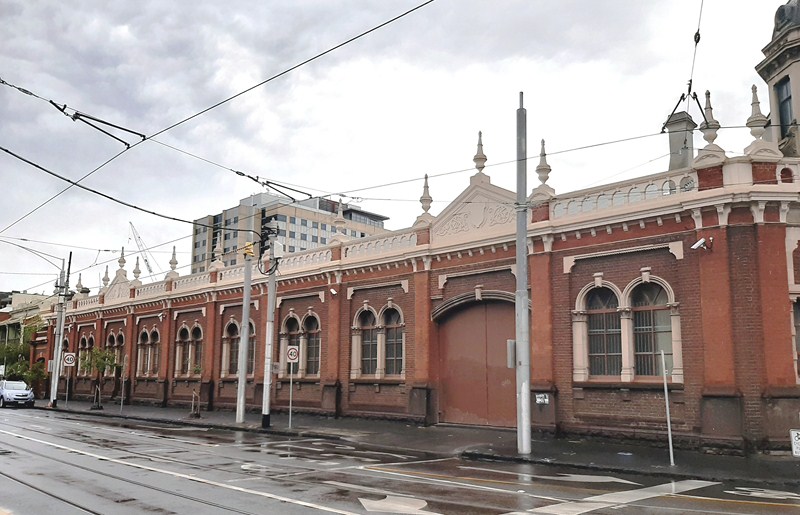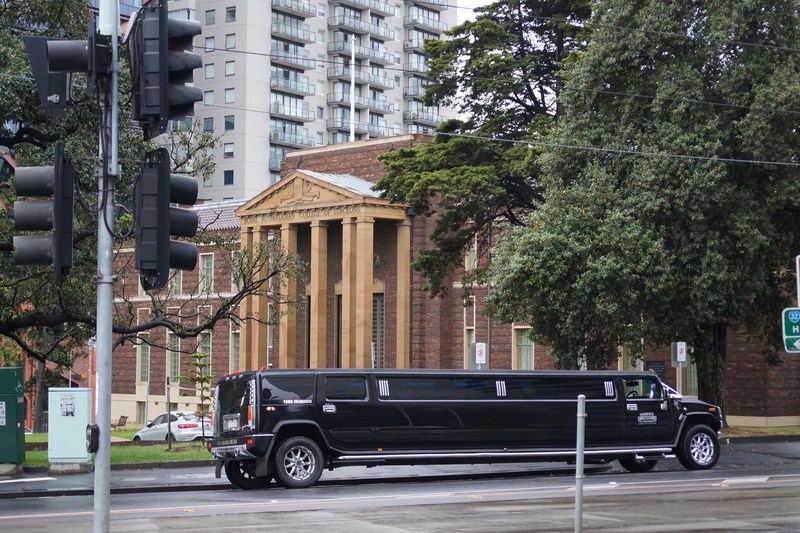Nicholson Street is home to several Melbourne landmarks including Parliament House and the Princess Theatre, at its southern terminus, and the Royal Exhibition Building (REB) and the Melbourne Museum, both in Carlton Gardens, just to the north. Adjacent to the REB and Carlton Gardens is the World Heritage Environs Area Precinct (WHEA), a precinct is of architectural and aesthetic significance as it retains substantially intact nineteenth century streetscapes, particularly on Nicholson Street (north of Gertrude Street), the south side of Gertrude Street, Carlton Street, and Rathdowne Street north of Pelham Street.
Check out “Royal Exhibition Building,” “Melbourne Museum” and “Carlton Gardens”
It incorporates important and intact areas of residential, commercial and institutional development within the early Melbourne suburbs of Carlton and Fitzroy, and institutional development in the northern area of Melbourne’s Central Business District.
The precinct is home to a number of terrace rows dating from the later nineteenth century. Melbourne’s flat terrain has produced regular terraced house patterns and the generic Melbourne style of terrace is distinguishable from other regional variations.
Many Melbourne terraces, featuring a unique style of polychrome brickwork heavily influenced by the early work of local architect Joseph Reed, are often highly detailed (though in many terraces this distinctive feature has been later painted or rendered over, although some have since been sandblasted or stripped back), incorporating decorative cast iron (Melbourne has more decorative cast iron than any other city in the world) balconies (of the filigree style).
Rather than built to the property line, Melbourne-style terrace houses are often set back from the street, providing a small front yard with decorative cast-iron fencing, regularly dispersed with rendered brick piers. The party wall of the end terraces would, sometimes, but not always, extend to the property line to join the fence.
Due to their proximity to the CBD, terraced houses in Melbourne are highly sought after and are often expensive, much like terraces in New York City.
The Royal Terrace (50–68 Nicholson Street Fitzroy, VHR H0172), the oldest surviving complete row and one of the largest and best known early terrace building surviving in Melbourne, was started in 1853 and completed in 1857, three years after the Glass Terrace (72–74 Gertrude Street, Fitzroy, 1853–54), the earliest surviving terraced house in the city.
This row of ten completely intact terrace houses, erected by the Bryant family (who also maintained a residence at No. 68) to a unique design attributed to colonial artist John Gill, epitomizes early terrace house design in Melbourne with its austere classical decoration, simple composition, and extensive use of bluestone. It has housed notable figures such as politician and three-times Premier John O ‘Shanassy, and artist Nicholas Chevalier.
At the national level, it is significant for architectural and historical reasons as the most important terrace in Melbourne. An outstanding feature of the Nicholson Street precinct, it complements the nationally significant Royal Exhibition Building and Carlton Gardens located opposite. Although modified over time, the flagstone paving, at the footpath in front of the terraces, is important as one of the few remaining examples of this once common 19th century paving in inner Melbourne. Laid when the terraces were built, it is perhaps the oldest such example.
Grantown House (82 Nicholson Street, c. mid-1850s) and Osborne House (40 Nicholson Street, c. 1850, VHR H1607) are significant examples of mid-nineteenth century residential development, and are also prominent buildings within the streetscape.
The two-storey Grantown House, an outstanding example of Victorian terrace house architecture and of considerable importance in the Nicholson Street streetscape, is of considerable interest for its unusual veranda joinery, very fine cast iron decoration, very elaborate door joinery, grand and richly detailed cast iron fence and the way in which the different eras of construction (the 1850s and the 1870s) are visible in the ornate façade.
Exhibiting notable creative and technical achievement, elaborate decoration are seen at the four urns on the piered and balustraded parapet, urns to the veranda walls, a row of bearded masks under the pediment, four delicate iron lace balconies under the top-floor windows and arched iron decoration to the two-storey verandas (a mixture of timber and iron). The columns and the spirals that edge them are timber. Although decaying, it still has elegance and presence amid the cracks, peeling paint and soot. It is currently a boarding house.
Osborne House, the oldest documented dwelling in this municipality and one of the oldest surviving in Melbourne, is a rare example of the Regency town house in Victoria. Its central section erected in 1850 by builder William Pelling for wealthy squatter John MacPherson, was acquired in 1887 by Melbourne merchant and speculator George Nipper who converted this private residence to a boarding house (operated for 93 years) via the construction of two flanking three storey wings with encircling iron verandas. The additions of this establishment (named Osborne House in the Jubilee Year of Victoria’s reign) are in the conservative Classical mode.
This notable brick structure, part of an important early Melbourne precinct which includes nearby ‘Royal Terrace and the Carlton Gardens, is essentially intact although minor alterations have been made to partition rooms or enclose external verandas. It had a variety of distinguished tenants including John A. MacPherson, Premier of Victoria in 1869 – 70. Although the work is not positively attributed to important Melbourne architect Charles Webb, the transformation of 1887 is a characteristic work of his.
Other notable terrace houses within the precinct include Dalmeny House (21 Queensberry Street, c. 1888, VHR H0525), Cramond House (23 Queensberry Street, c. 1888, VHR H0482), the two-storey Elsmere Terrace (70 Drummond Street, 1882), Elim House (18-20 Carlton Street), Annie Villa (22-24 Carlton Street) and Canning Terrace (46-50 Carlton Street).
World Heritage Environs Area Precinct includes a number of key heritage buildings from the nineteenth and early twentieth centuries, some of which are landmarks in their own right. They include the Cable Tram Engine House, St. Vincent’s Hospital, Royal Society of Victoria Building, the Convent of Mercy, the Royal Australasian College of Surgeons and the Academy of Mary Immaculate Chapel.
The Academy of Mary Immaculate (88 Nicholson Street), the oldest Catholic school in Victoria, was founded by the Sisters of Mercy in 1857. It has a collection of largely intact, elegant 19th century religious buildings, including two almost identical regency houses (erected in 1850 to designs by architects Newson and Blackburn for John Watson and Edward Wight, merchants in partnership), some of the earliest stone houses in Melbourne. Its sandstone memorial chapel, on the corner of Palmer and Nicholson Streets, was built in memory of Mother Ursula Frayne and dedicated on March 26, 1889. It was designed by Reed Smart and Tappin (also responsible for the Convent of the Good Shepherd in Abbotsford).
The former Cable Tram Engine House (1021-1029 Rathdowne Street and 440 Park Street Carlton North, Yarra City), built in 1889, consists of the brick engine house (designed by MTT architect Robert Gordon) built for the Melbourne Tramways Trust (MTT), located on the corner of Rathdowne and Park Streets, and the neighboring unadorned, utilitarian brick car shed (designed by architect Frederick Williams) built for the Melbourne Tramway & Omnibus Company (MT&OC)
The monumental Greek Revival-style Royal Australasian College of Surgeons Building (250-290 Spring Street and 2-40 Victoria Parade, VHR No. H0870), designed by architects Leighton Irwin and Roy Stevenson and built by J.C. Taylor, was opened in 1935. The east and west wings to the rear were added in 1963.

